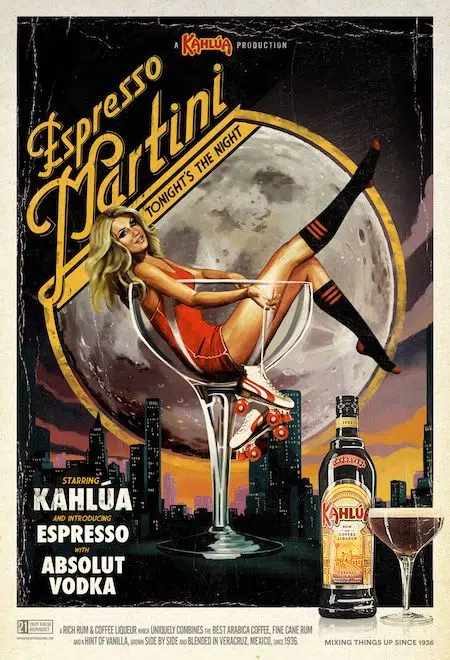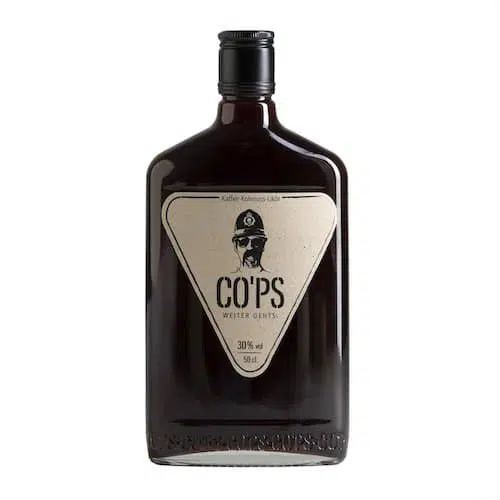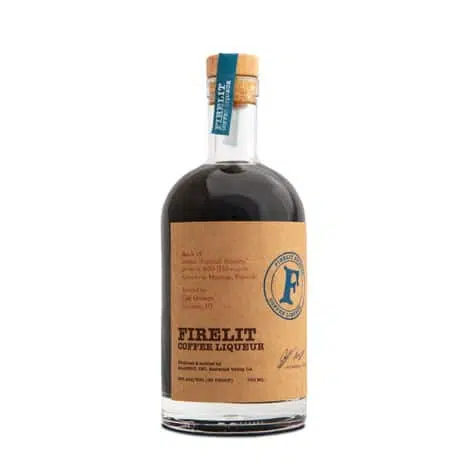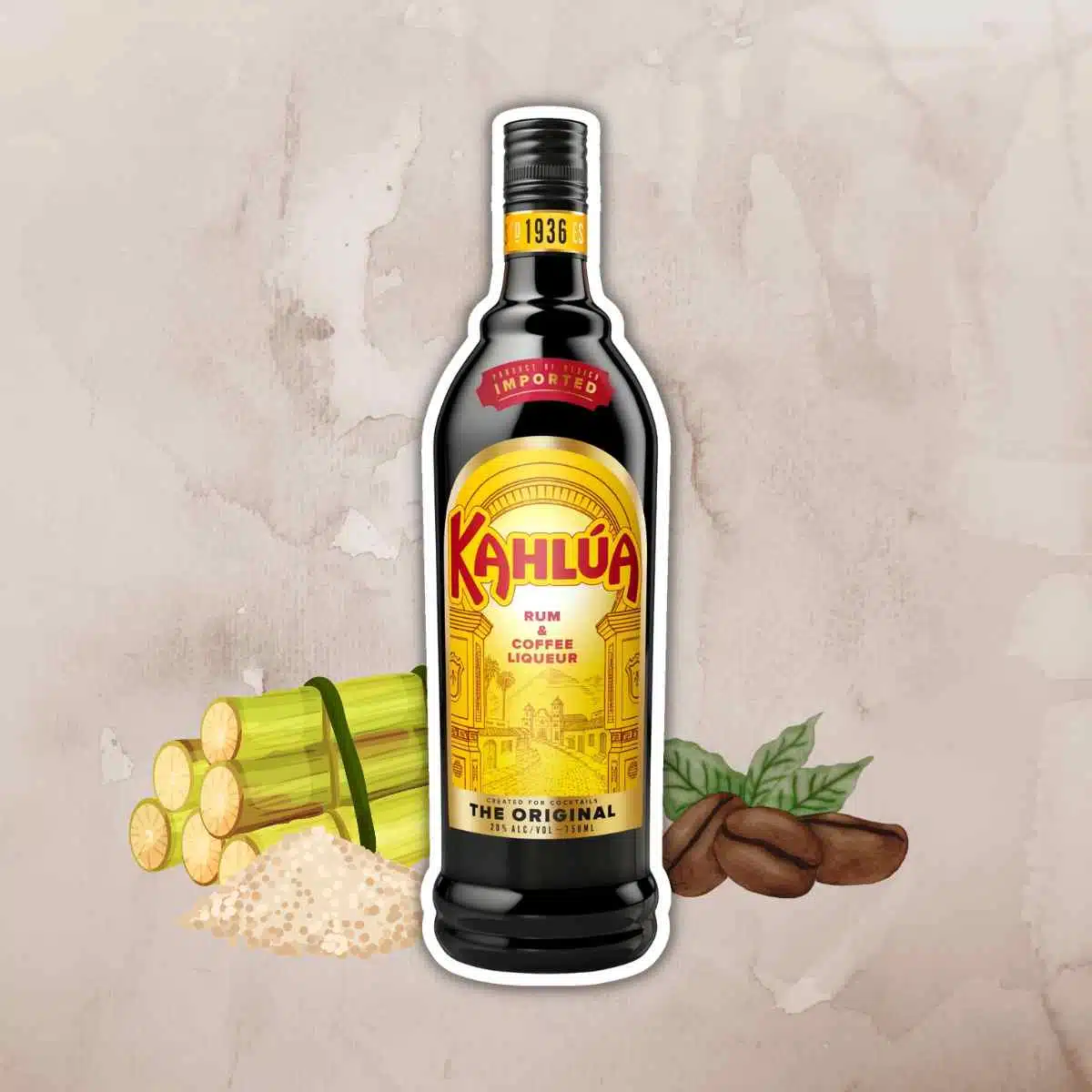Kahlua is a coffee liqueur from Veracruz, Mexico, made from arabica coffee beans, rum, sugar, and vanilla. The liqueur is of deep brown color, contains 20% alcohol by volume (40 proof), and is an ingredient in many classic cocktail recipes.
Cocktails like Black Russian and White Russian were the reason for its early success. But the recipe for making an Espresso Martini was what made it the world's best-selling coffee liqueur.
Every year, more than 1.5 million bottles of Kahlúa coffee-flavored liqueur are sold, with no end in sight. You can get Kahlúa in almost every country on the planet, and it's an essential ingredient in one of the currently trending cocktails - the Espresso Martini.
Kahlúa is dairy-free, but unfortunately, the liqueur is not entirely vegan. According to Pernod Ricard, one of their sugar suppliers is not using a not vegan-friendly refining process.
So let's find out when Kahlúa was invented, how it's made, and how it continues to influence modern mixology.
Facts | History | How it became famous | Recent history | Taste | Meaning of Kahlúa | Ingredients | Caffeine content | Production process | Cocktails | Alternatives | FAQs
Kahlúa Coffee Liqueur facts
- Owner: Pernod Ricard
- Produced in: Veracruz, Mexico
- ABV: 20% (40 proof)
- Caffeine content: 4.5mg per 1.5 oz
- Bottle size: 750ml
- Price in the US: $27
- Classification: Coffee liqueur
- Color: dark brown
- Aroma: coffee, sweet butter
- Taste: bittersweet, coffee, dark chocolate, caramel
History
Kahlúa coffee liqueur was invented in 1936 by Pedro Domecq in the rural area of rural Veracruz, Mexico. It contains the finest arabica coffee beans harvested in the area.
The idea for the first coffee liqueur was a spontaneous idea of 2 pals. -One of those many of us after a couple of beers with friends. But these two, known as the Alvarez brothers, actually followed up on it, and it paid off.
Only four years later, Kahlúa found its way to the US. From there, the brand started its victory march.
Unique Marketing
One thing that distinguished Kahlúa from other liqueur brands was clever advertising.
It began in the 50s with quirky figurines placed in each advertisement to honor the rich Mexican heritage. Although it looked a bit strange, people loved it.

In the 1960s, Maria del Pilar Gutierrez Sesma took over as the company's general manager and surrounded herself with an all-female marketing team. What is still a rarity today was almost unheard of back in the 60s.
These ladies catapulted Kahlua to the next level of fame and success. From the late 1970s to the 90s, Kahlúa seemed to be everywhere. Drinks like the Black Russian, White Russian, and Espresso Martini contributed heavily to the fame of the coffee liqueur.
All those cocktail recipes explicitly called for Kahlúa and were ingeniously used in the brand's advertising campaigns.
Recent History
Even today, where there's more competition than ever in the market of coffee liqueur, Kahlúa defends the number one spot. And it does not look like things will change anytime soon.
Since 2005, Kahlua has been part of Pernod Ricard, the world's second-largest wine and spirits seller, grossing just under 9 billion in 2021. Kahlùa contributed to that success with a sales volume of 1.8 million 9-liter cases that same year, making it the sixth bestselling liqueur worldwide.
How does it taste?
Kahlúa has a rich, full-bodied, sweet taste with intense coffee flavors and hints of vanilla, caramel, and sweet butter. The mouthfeel is slightly syrupy.
At 20% ABV, it does not have a strong alcoholic bite but is sweet, smooth, and easy to drink. Thanks to the different flavorings and the high sugar content - Kahlua contains a whooping 40gr per 100ml- it is also popular with non-coffee drinkers.
What does Kahlùa mean?
There are two possibilities for how Kahlúa got its name. The first would be it goes back to the Veracruz language that originated in the 7th century. This theory states that Kahlua means 'house of the Acolhua people' in the local Nahuatl language. However, the brand Kahlúa says that this is not where the name originates.
The other option - the one Kahlùa themselves stick to - ties it to ancient Arabic languages. Allegedly, it once has been a slang term for coffee. Regardless of its origins and how farfetched they may sound, the name stuck.
The Ingredients of Kahlúa
The main ingredients of Kahlúa coffee liqueur are rum, sugar, and coffee beans. They use the finest 100% Arabica coffee beans, which bring the delicious bitter coffee taste to the liqueur.

Absolutely no artificial flavorings are involved. And the guys even make their own rum.
But let's take a closer look at the coffee beans: If there are real coffee beans used, there should be caffeine in Kahlúa, right? But it's not that straightforward.
Caffeine content
Scientifically, the answer to the question "Does Kahlúa contain caffeine?" is yes. One liter of the liqueur contains 101 milligrams of caffeine. But if you break this down to one shot of Kahlúa (1.5 oz), you get only 4.5 milligrams of caffeine per serving. Coke has roughly the same amount of caffeine with 9.5mg per 100ml - or, for easy comparison, 4.2mg per 1.5oz.
If you compare this to a cup of coffee (40mg/100ml or 18mg /1.5oz), the caffeine in Kahlúa is very little. -Espresso even has 95mg per shot, so 20 times the amount of the coffee liqueur. - Remember this when looking through our favorite substitutes.
It takes 7 years to make one bottle of Kahlùa
That's a provocative statement, but if you look at the process from start to finish, it is true.
Altogether, you need about seven years to produce a bottle of Kahlúa coffee liqueur. The majority of this time goes into getting the coffee beans. They only grow in the shade, not in the sun. That slows the process down a lot. Therefore, it can take up to 6 years until they're ready to be used.
Once the coffee cherries are ripe, the beans are extracted from the fruit and then need to rest for about six months. Before they finally arrive at the distillery, they get roasted to create that intense and bitter coffee flavor.
The rum is made by extracting the juice of sugarcane. Boiled and mixed with water, it's ready for distillation. It is combined with the coffee beans and gets the finishing touches before resting for another four weeks.
Now, Kahlúa's famous coffee liqueur is ready to be bottled and shipped to destinations all around the world.
Popular Kahlúa Cocktails
- Black Russian: This simple combination of vodka and coffee liqueur was one of the early drinks to make with Kahlua. It's a boozy concoction with a strong coffee flavor.
- White Russian: Invented in 1955 in Oakland, California, the recipe adds cream to the two ingredients of a Black Russian. The favorite drink of the main character in the 1990s movie The Big Lebowski.
- Espresso Martini: Probably the most sought-after cocktail to make with Kahlua. An Espresso Martini is made with freshly brewed espresso, coffee liqueur, and vodka. A refreshing and delicious pick-me-up.
- B-52 Shot: Not a cocktail but a delicious shot from the 80s. To make a B-52, layer Kahlua, Baileys Irish cream, and Grand Marnier.
Kahlúa substitutes
Besides Kahlúa, Tia Maria is another big name in the coffee liqueur business. But there's plenty more competition nowadays since products containing coffee have been trending for years already.
Many of those alternatives are experimental, trying to push boundaries and create a richer flavor profile. Each product wants to be different by using a certain bean or roasting technique, alternative sweeteners, or a different brewing technique.
Here are some alternatives I recommend if you want to try something new.
CO'PS
CO'PS actually is not a coffee liqueur but an espresso liqueur. Therefore, one single shot of CO'PS contains the equivalent amount of caffeine of an Espresso. It also does have 30% vol. of alcohol, so you know you can get a real party started with this liqueur.

CO'PS is made from 100% coffee beans and cola nuts. The brand owners developed a maceration process that extracts aromas and caffeine extremely well and makes for a smooth taste.
Firelit

Firelit uses cold-brewed coffee as the base for their liqueur. Blended with a coffee-infused brandy and aged in steel tanks, it takes about four weeks until the flavors fully integrate and the product is finished.
I prefer to drink it neat, but it also works well in coffee cocktail recipes.
Bittermens New Orleans Coffee Liqueur

If you're looking for a heavier and more pronounced coffee taste, this New Orleans-inspired recipe is for you.
With Brazilian coffee beans roasted to perfection, this coffee liqueur is for hard-core coffee lovers who prefer their brew strong and bold.
Frequently Asked Questions
Unopened, Kahlùa will last up to 4 years. Although, after about four years, it will start to lose some of its flavors. Opened, it will last for at least 18 - 24 months. When stored in the fridge, even longer.
Since 2005, the famous coffee liqueur has been part of the French company Pernod Ricard.
The most popular substitute is the slightly less sugary Tia Maria. However, there are many more excellent coffee liqueur brands worth trying.
The flavor of Kahlua is full-bodied, rich, and sweet.
Kahlua contains 20% alcohol (40 proof), making it considerably less boozy than spirits like whiskey, rum, or gin.

